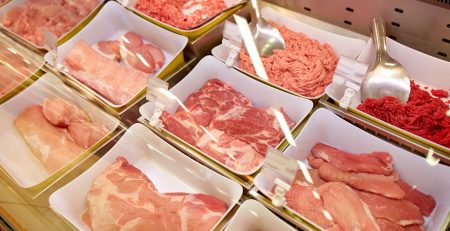Production Disruptions Slow May Exports of Beef, Pork
Production slowdowns at American meatpacking facilities caused by the coronavirus pandemic this spring produced declines in exports for both beef and pork during May.
Beef exports fell 33% during May compared to 2019, recording the lowest monthly volume in 10 years, according to data released by USDA and compiled by the U.S. Meat Export Federation. The value of beef exports fell 34% to $480.1 million as shipments were higher than a year ago to Hong Kong and China but lower to most other markets. For January through May, beef exports fell 3% below last year’s pace in volume (512,596 mt) and 5% lower in value ($3.14 billion).
May Pork exports remained higher than a year ago but were the lowest since October 2019. Pork exports in May were 12% above a year ago, but down 13% compared to the monthly average for the first quarter of 2020. May pork exports increased year-over-year to China/Hong Kong, Taiwan and Vietnam, but trended lower to Mexico, Japan, Canada and South Korea. For January through May, pork exports were 30% ahead of last year’s pace in volume (1.35 million mt) and 37% higher in value ($3.53 billion).
“As protective measures related to COVID-19 were being implemented, plant disruptions peaked in early May with a corresponding temporary slowdown in exports,” said USMEF President and CEO Dan Halstrom. “Unfortunately the impact was quite severe, especially on the beef side. Exports also faced some significant economic headwinds, especially in our Western Hemisphere markets, as stay-at-home orders were implemented in key destinations and several trading partners dealt with slumping currencies.”
Halstrom noted that the recent rebound in beef and pork production will help exports regain momentum in the second half of 2020. The global economic outlook is challenging, but he looks for export volumes to recover quickly in most markets as U.S. red meat remains an important staple, not only in the United States but for many international consumers as well.
“In what has been a remarkably turbulent year, consumer demand for U.S. red meat has proven very resilient,” he said. “Now that production has substantially recovered, the U.S. industry is better able to meet the needs of both domestic and international customers. While the foodservice and hospitality sectors face enormous challenges, they are on the path to recovery in some markets while retail demand remains strong. Retail sales have also been bolstered by a surge in e-commerce and innovations in home meal replacement, as convenience remains paramount.”
Content within the Farm Journal Forum is the property of Farm Journal, Inc and protected by copyright.









